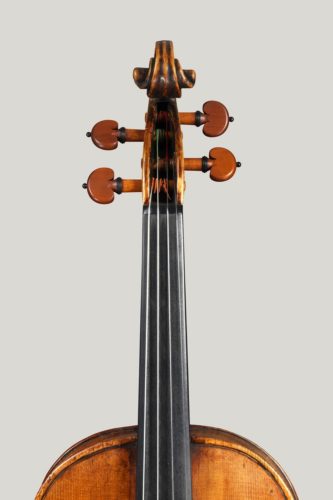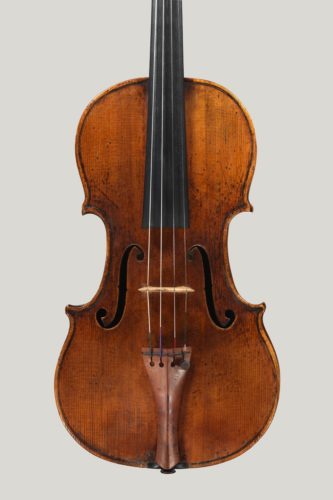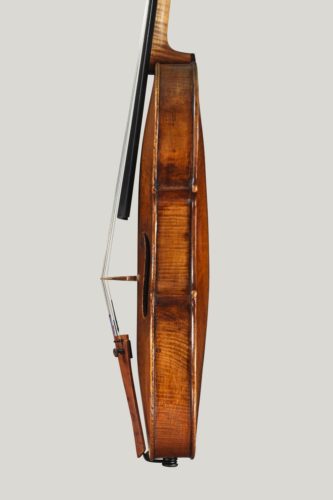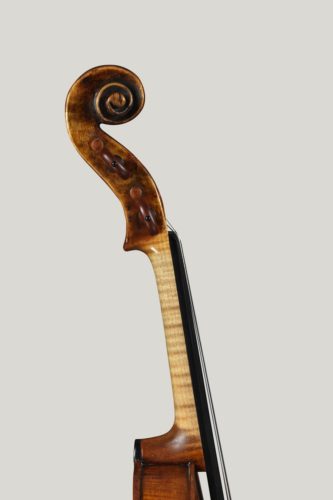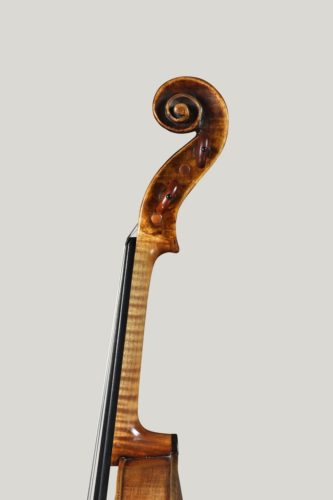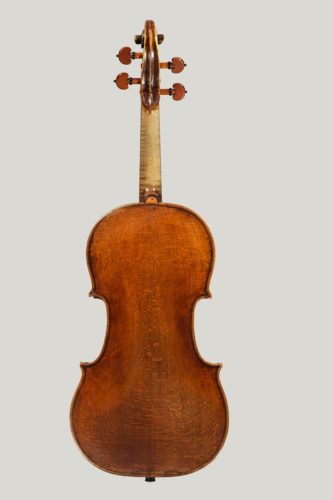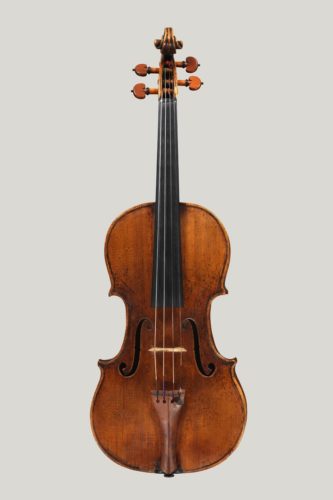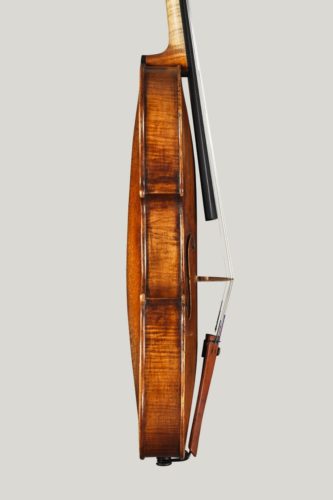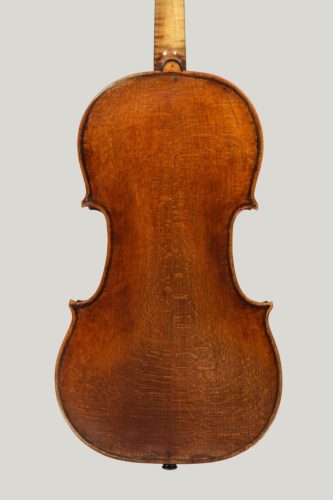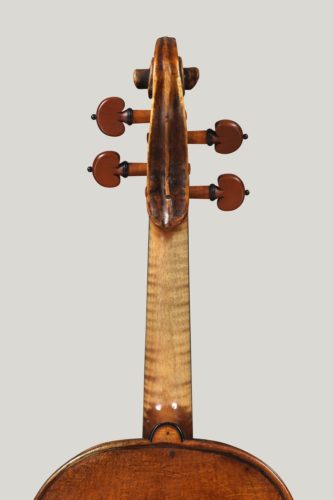Guiseppe Guarneri del Gesù
Violin made by Guiseppe Guarneri del Gesù in Cremona, Italy, in 1744. Henning Kraggerud plays on this instrument.
Guarneri del Gesù is the only violinmaker whose work offers a challenge to Stradivari in terms of sound, and is viewed by many as a great artist who evolved a completely new aesthetic approach to violinmaking in his relatively short working life.
He was born in 1698 into a family of violinmakers in Cremona. His grandfather Andrea was the first pupil of the great Nicolò Amati; his father Giuseppe ‘filius Andreæ’ was a prolific and inventive maker; his uncle and brother, both named Pietro, inspired generations of luthiers in Mantua and Venice. A great romantic mythology has been drawn around Giuseppe Guarneri by earlier writers on the violin, who dubbed him ‘del Gesù’ to distinguish him from his father, who shared the same name. This was derived from the Jesuitical emblem IHS (Jesu Hominem Salvator, or ‘Jesus the saviour of man’) he applied as an identifying mark to his labels.
His puzzlingly short career led to rather less saintly stories of him having committed a murder, and his enervated yet expressive late style was attributed to imprisonment. The romance of Guarneri was encouraged by association with Nicolò Paganini, who played the most famous del Gesù violin of all, which he named his ‘Cannon’. Paganini himself was surrounded with legends of devilish pacts to explain his dazzling technique; what better than he should play on a del Gesù? More recent research has brought out a more prosaic, still fascinating story of a man born to be a violinmaker, who for a time seemed to struggle to escape it, yet finally wrought a new approach to the craft before dying in obscurity.
This violin is an enthralling example made in the last year of Guarneri’s life, and shows perfectly the challenging nature of his late work and the drama of its creation. He seems to have worked almost feverishly; every aspect is deeply sculpted and torn by the tools, unpolished and spontaneous. Such a contrast to the centuries old traditions of refined craftsmanship in Cremona must have been shocking indeed. The head is ragged and twisted, the soundholes unequal and almost grotesquely extended. The other shock is the nature of the materials used; from Cremona we expect to see the choicest wood with beautifully rippling figure and perfect grain. Yet here del Gesù has used plain beechwood for the back and locally grown maple for the sides. This is unique in del Gesù’s known oeuvre, and rarely seen in any other Cremonese work. Nevertheless, the soundboard is of alpine spruce, and the varnish is his best dark red-brown. The label it bears is unfortunately a copy, but the violin itself remains in wonderful condition.
This is the first time the instrument has been shown in Europe since the 1950s, and it is not recorded in any of the standard published works. Before the Second World War it was in the collection of the Berlin based connoisseur and dealer Emil Herrmann, who sold it to Edith Lorand, in whose possession it came to New York. In 1962 it was sold to Richard Burgin, concertmaster of the Boston Symphony, who owned and played it until 1977, when it was purchased by the Richard D. Colburn Foundation of Beverly Hills, California. It has reached the collection of Dextra Musica through Peter Biddulph of London, who negotiated the sale in 2006.
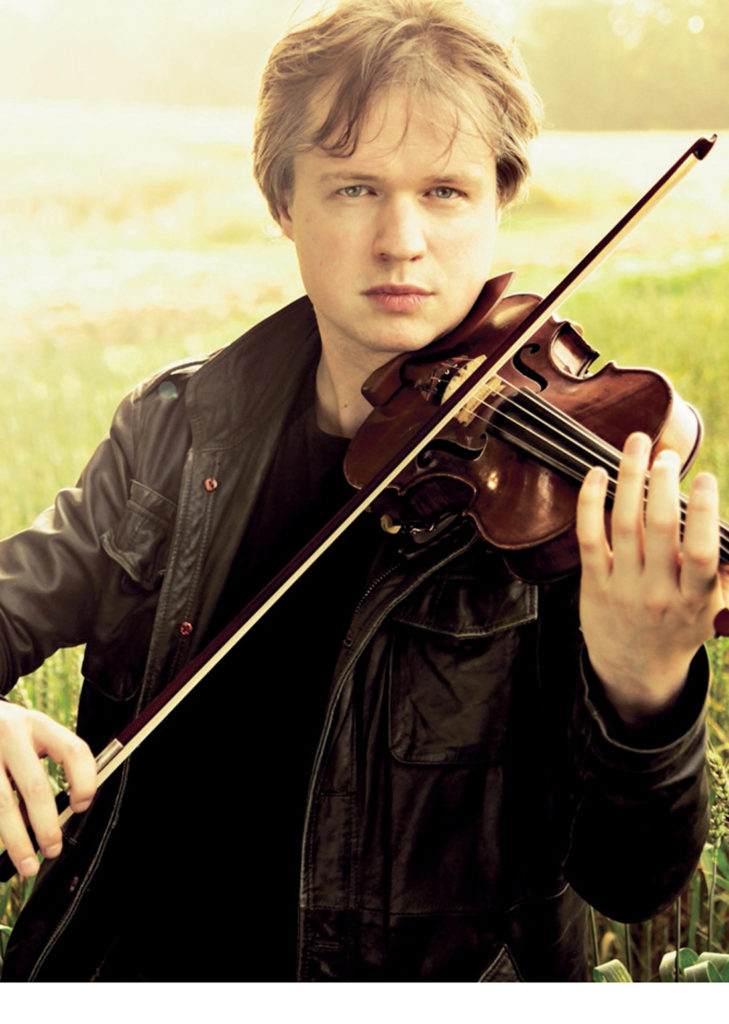
Henning Kraggerud
Norwegian violinist Henning Kraggerud is an artist of exquisite musicianship, who combines an unusually sweet tone and beauty of expression with impressive virtuosity. Kraggerud performs at a high level throughout Europe and North America, and is increasingly in demand in a play/direct capacity.
